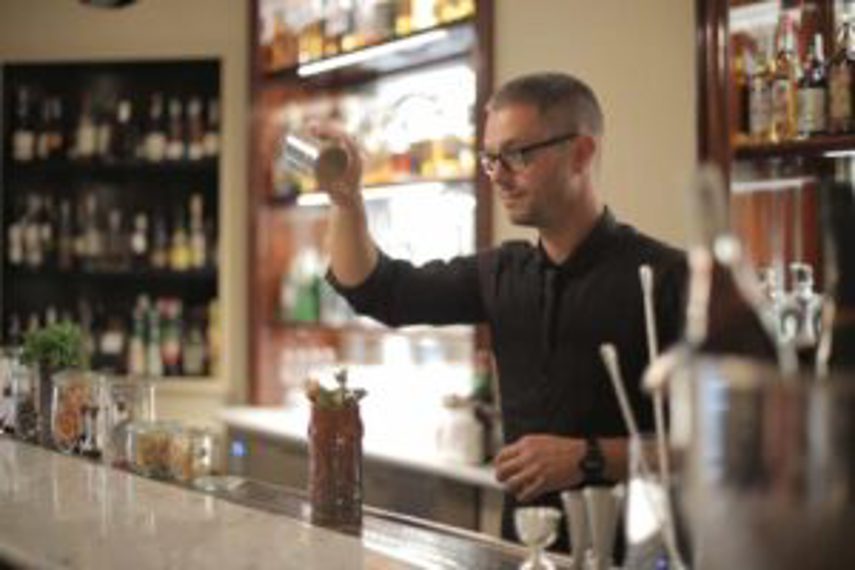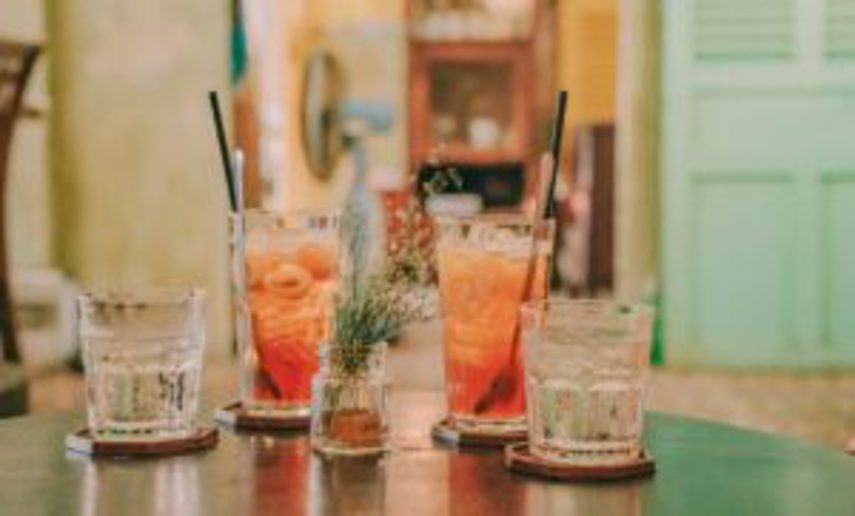
The spirits distillery industry is evolving at speed as consumer tastes, habits – and demands – change. As the peak of the pandemic fades, these trends are becoming more prominent.
So how are these trends changing the industry, and what can we expect in 2024 and beyond? We take a look at 19 key trends, and what to expect in the future from this industry.
How is the alcohol industry changing in 2024?
With the Covid-19 pandemic safely in the rearview, the alcohol industry is seeing a greater focus on health and wellbeing, increased demand for low- and no-alcohol (Nolo) drinks, more focus on green credentials, and a return to the classics in 2024.
These trends have been exacerbated by months of Covid lockdowns around the world, which shuttered restaurants and hospitality venues, forcing consumers to create their own alcoholic drinks and mixes at home.
This shift has emerged alongside a broader, growing interest in holistic wellbeing, health and the environment. There has also been the rise of movements such as the ‘sober curious’ or ‘mindful drinking’, which are especially popular among younger generations.
 Increased interest in wellbeing and more conscious consumption are two core movements underpinning current spirits drink trends
Increased interest in wellbeing and more conscious consumption are two core movements underpinning current spirits drink trends
A shift towards cleaner living
Perhaps the most prominent shift in the industry has been the trend toward cleaner living, prompted by the pandemic and a desire to protect our health, along with a broader uptick in awareness of general wellbeing.
Huge expansion of the NoLo spirits market
Sales of non-alcoholic beverages increased by 33% in 2022. The shift towards cleaner living has led to the huge expansion of the NoLo market, which is estimated to be growing year-on-year by around 17%, with UK supermarkets such as Tesco and Sainsbury’s reporting annual sales increases of around 100%.
The sober curious movement gets bigger
The ‘sober curious’ movement is largely being driven by the Millennial generation, who are turning to the likes of mocktails and kombucha as they socialise ‘over a drink’ but without the negative side effects.
The trend is creating huge interest in new mixes, with the likes of Seedlip exploring complex botanical tastes and flavours.
Increased interest in classic spirits
Alongside the growth of the NoLo industry, there is also a resurgence in classic spirits.
This increased interest in easy-to-mix, identifiable flavours of the classics can in part be attributed to consumers educating themselves and creating mixers while in lockdown.
The trend also reflects a certain comfort in familiarity at an unstable time.
Distillery Inventory Software That Lifts Your Spirits
Get back to the products you’re passionate about with cloud-based distillery software Learn moreComplex flavours and sustainability
The increased interest in complex flavours, alongside the broader awareness of sustainability, is helping drive the market for craft distilleries.
Again, the demand is largely coming from younger generations who are more concerned with what they are drinking, what it says about them, and how it impacts the planet.
The rise of RTDs
Another trend is the rise in RTDs (ready-to-drink). Searches for canned cocktails have grown by over 200% in the last year.
This trend is coming to the fore as people venture back into hospitality venues and seek an easy, flavoursome drink. The category, which is growing in the double digits year-on-year, makes up nearly 10% volume share of the total alcohol market. It's expected to reach around 20% of the market by 2025.
Spirit-based RTDs hold 45% of the category volume share. Taste is considered to be a leading factor behind the rising popularity of RTDs, followed by packaging attributes such as single-serve sizing and portability.
Logistical and supply chain issues
Beyond these trends, the alcohol industry has been hugely disrupted by logistical and supply chain issues.
There has been a squeeze on transport and a shortage of glass bottles, in particular, meaning manufacturers have had to search for other options to package and deliver their products around the globe.
This, in turn, creates risks around auditing, health and safety, and reliability. Hiccups in any of these areas can cause massive brand damage and upend a business.
 Whisky has seen a boost in popularity in recent times – part of a shift towards premium and super-premium drinks
Whisky has seen a boost in popularity in recent times – part of a shift towards premium and super-premium drinks
9 key distilled spirits drink trends in 2024
In the distilled spirits market, several trends are becoming apparent. Here we identify 9 noticeable shifts in the market.
1. Whisky’s growing popularity
There has been a surge of interest in whisky, as part of the shift toward premium drinks.
As consumers have been drinking more at home than in hospitality venues, they have become choosier about the quality of the alcohol they put into their bodies.
Furthermore, the decrease in discretionary spending, forced upon consumers by the closure of shops, has freed up the household budget for higher-quality alcohol. The increase has been particularly notable in the Asian market, with single malt whisky growing rapidly in popularity.
2. Low- and No-alcohol (NoLo) options
Low and No (NoLo) alcohol options have seen a massive increase in popularity, driven by the millennial generation and movements such as the ‘sober curious’.
According to the IWSR 2022 Drinks Market Analysis, the NoLo market is now worth around $US10 billion, with global market share now sitting above 6%. The category most driving growth is no-alcohol, particularly in beer and spirits.
- Learn more about no- and low-alcohol beverages in Unleashed’s NoLo Alcohol Report
3. The rise of craft distilleries
The trend for artisanal beers and spirits has been gaining traction for some years, and the global craft spirits market is estimated to expand by more than 10% over the next five years.
While craft distillers’ on-site and tasting room sales were heavily impacted by the pandemic and forced closures, demand picked up from those at home who were looking for a quality, flavoursome product.
Craft distillers are meeting the trend for products which are high-quality, sustainable, and ‘on brand’ for the younger generations.
 The demand for artisanal spirits has been growing and is expected to continue over the next five years
The demand for artisanal spirits has been growing and is expected to continue over the next five years
4. Hard kombucha becoming popular
Hard kombucha is made just like kombucha – with yeast, bacteria, sugar and tea – but it is fermented for longer, meaning its alcoholic content rises. Kombucha is touted as naturally healthy, with its gut-friendly probiotics and its all-natural fermentation processes.
As such, the increased interest in health and wellbeing has led to an uptick in sales of kombucha and – for those looking for a little kick with their healthy drink – hard kombucha. According to Nielsen data, off-premise hard kombucha sales grew by nearly 130% to the end of 2022.
5. Cannabis-infused beverages entering the mainstream
There has been an uptick in cannabis-infused beverages as an alternative to those with alcohol content. Cannabis is becoming increasingly mainstream and its introduction into drinks is a natural evolution from its appearances in other culinary products.
Major brands like Heineken-owned Lagunitas and Pabst have introduced cannabis-infused drinks in recent years. Brightfield Group, a trade group for CBD, is picking cannabis-infused beverages to exceed US$1billion in annual sales by 2025.
6. Wellbeing interest behind uptick in low-sugar spirits
As part of the trend toward healthier options, there is a shift toward low-sugar spirits. These include popular options such as gins, tequila and rum. However, the amount of sugar content ultimately included in the drink often depends on the mixer.
7. Hard seltzers still on trend
Hard seltzers – alcohol and flavoured carbonated water – is another category that is benefitting from the increased interest in health and wellbeing.
Hard seltzers are low in alcohol, sugar and calories compared to other drinks in the market, and therefore appeal to those wanting to look after their weight and general health. The hard seltzer market is expected to reach $US57 billion by 2030, according to a report by Grand View Research.
8. RTD cocktails resilient against pandemic
Another notable trend that has emerged through the pandemic is the rise of RTD cocktails. The ready-to-drink market proved its resilience through the shuttering of the hospitality industry, as consumers purchased RTDs as an easy, flavoursome home-consumption option. The category’s growth rate is expected to exceed 10% through to 2025.
9. Tea, fruit and botanical flavours
Edible plant extracts, also known as adaptogens, are back in vogue as part of the trend toward wellness. Adaptogens have been around throughout Asia and India over millennia, and are now making their way into mainstream drinking flavours. The plant-based drinks market is now picked to hit nearly $34 billion by 2026.
 As part of the wellness trend, spirits including plant extracts and low-sugar alternatives are becoming more mainstream
As part of the wellness trend, spirits including plant extracts and low-sugar alternatives are becoming more mainstream
10 key distilling industry trends
The alcohol sector is expected to register steady growth, of just over 3% until 2025. The growth has been supported by the uptick in consumers drinking at home, and exploring new products and flavours that reflect the increased interest in health and wellbeing.
While challenges remain with supply chains, global inflation and instability, the industry is tapping into opportunities that have emerged as a result of the pandemic.
In 2024, we expect to see a continuation of the trend towards brand transparency and customer service.
Last year, 69 brands from 28 tequila distilleries took part in the Tequila Matchmaker Additive-Free program to demonstrate the veracity of their additive-free distilling processes.
1. Premiumisation and super-premiumisation
There has been a notable rise in the popularity of premium and super-premium products.
This trend runs alongside the lift in wellbeing products, as consumers seek better quality goods. It also reflects the increased disposable income of those who remained financially stable through the pandemic, but were unable to spend money on holidays and other discretionary items.
2. Spirits are taking a larger market share
Spirit sales are growing at a rapid pace, buoyed by the shift to premium quality and simple cocktails that can be mixed at home. The global craft spirits market is expected to grow by $49.11 billion from 2023–2027, with millennials and older consumers alike enjoying a good malt whiskey, shot of tequila or vodka with soda.
3. The resilience of the alcohol sector
The alcohol sector has proved remarkably resilient during the pandemic, with consumption shifting from on-site to at home.
Revenue reached $261.1 billion in the US alone in 2022. The alcohol market is expected to grow annually by 8.08%, according to data published by Statista. A promising sign for beverage manufacturers and retailers worldwide.
4. Home consumption versus on-trade
The increase in consumers drinking at home might have been forced by the pandemic, but it marked the growth of consumers exploring new drinks and flavours.
Enter, the home bar! While home bars have been around for decades, the forced at-home drinking of the last two years has led to increased interest in the design and ambience of recreating a sophisticated drinking corner, at home.
 While the spirits industry is facing external challenges such as supply chain difficulties and shortages of key components like bottles, it has been resilient under pandemic-induced pressures
While the spirits industry is facing external challenges such as supply chain difficulties and shortages of key components like bottles, it has been resilient under pandemic-induced pressures
5. Health-conscious choices rise amid pandemic
Health-conscious choices have been behind the rise in many alcohol categories, including NoLo, hard Kombucha, hard seltzers and adaptogens. The trend can be attributed to the much greater interest in protecting our health, given the disease that has swept the world, and the awareness that another could follow at any time.
6. Purchasing via eCommerce
Ecommerce took off during the pandemic, as consumers stuck at home turned to their computers and ordered online. And in 2024, the surging sales are expected to continue.
Alcohol was no exception to this trend, with IWSR analysis showing the eCommerce market for wine and spirits was up by more than 40% between 2019 and 2020, the first year of the pandemic. Statista is now forecasting online revenue in the U.S. market will increase threefold from 2020 to 2025.
7. Pressures from external factors
Even as the market booms in certain areas, the industry is facing challenges such as supply chain disruptions and soaring inflation. Supply chain disruptions have caused issues across the globe, with transport delays and product shortages.
In the alcohol industry, the shortage of glass bottles in particular has caused major snags. Shipping issues have also meant deliveries have been delayed and customers have been left without the products required on time. Alongside this, soaring inflation around the globe means prices are rising at pace.
These challenges are potential risks to both the brand and the financial stability of any brand that cannot mitigate them.
- Read more on how SMEs can boost supply chain resilience
8. D2C sales by alcohol makers
The ability for alcohol manufacturers to sell directly to consumers can be a complex process, given compliance needs including an appropriate license and adherence to particular taxation requirements. Different jurisdictions have different requirements, as do different alcohol types. It is, however, an area which is picking up given the impact of the pandemic and the growth in consumers drinking at home.
With compliance and regulations constantly changing, this is an area that is expected to grow.
9. Sustainable practices
The trend toward sustainability in alcohol products reflects greater awareness generally for greener, more planet-friendly products.
Consumers are making their preferences clear, with research from the Kerry Group showing nearly half of all consumers consider a brand’s sustainability credentials when buying food and drink. Furthermore, research from IWSR shows nearly half of American alcohol drinkers are positively influenced by a brand’s environmental position when considering a purchase.
10. Celebrity spirits brands
Celebrities are also jumping on the alcohol bandwagon, with the likes of George Clooney and Kendall Jenner churning out products – and making a fortune on the way.
George Clooney sold his tequila brand Casamigos to Diageo in 2017, for up to $US1 billion, depending on its performance over time. Jenner came later to the party, releasing her brand Tequila 818 in 2021. Jenner was tripped up by complaints about promoting irresponsible drinking when she was pictured on social media drinking the spirit through a straw.
What is the future of the spirits industry?
The future of the spirits industry is looking bright. Its resilience through the pandemic was remarkable, and through this period new categories, flavours and ideas have come to the fore.
The reopening of hospitality alongside the rise of the at-home bar, the renewed interest in wellbeing, and the next-generation interest in NoLo products all suggest the industry will enjoy a healthy future. Indeed, according to Statista the market is expected to grow by an impressive 6.78% until 20
